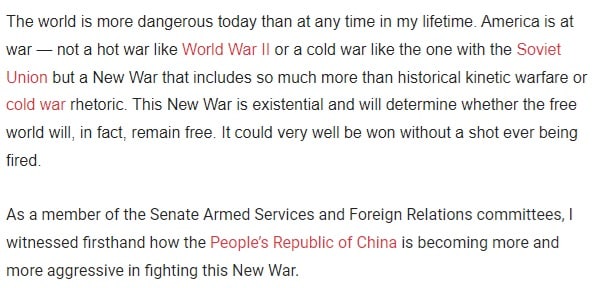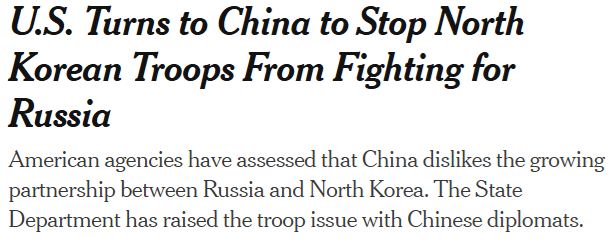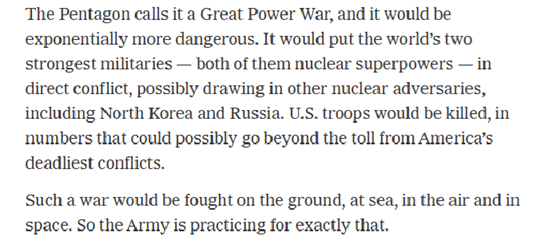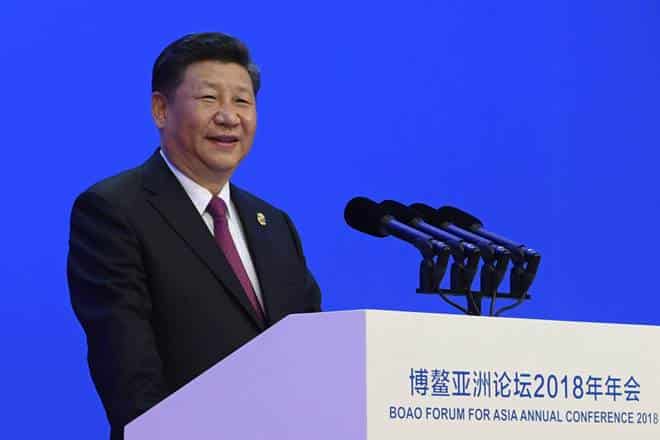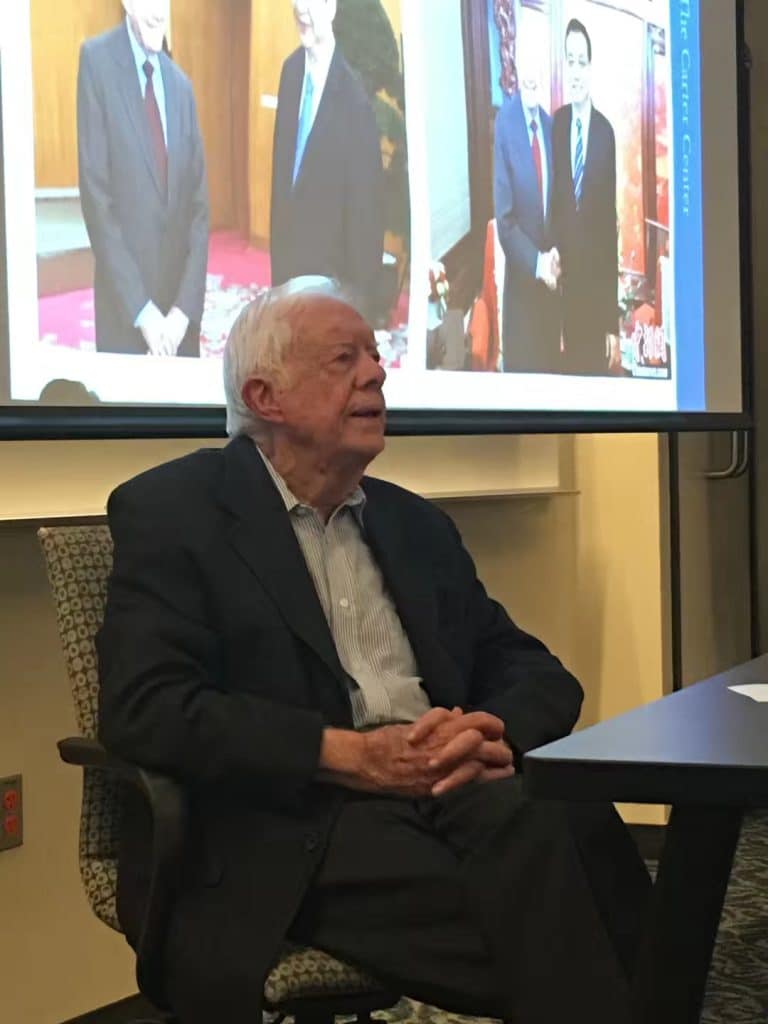Suggested Readings: April 9 – May 3, 2019
作者:Robert A. Kapp 来源:US-China Perception Monitor
April 9 – May 3 (Delays occasioned by Editor’s travels)
PRC Domestic
https://jamestown.org/program/the-communist-youth-league-announces-plans-to-send-a-new-generation-down-to-the-countryside/?mc_cid=bdab11adf7&mc_eid=1e2abdac25 The Communist Youth League announces plans to send youth from urban areas to rural and disadvantaged areas to assist in rural development. Reminiscent, for some, of the Mao-era practice, especially during Cultural Revolution.
https://jamestown.org/program/nowhere-to-run-nowhere-to-hide-whither-jihadism-in-china/?mc_cid=bdab11adf7&mc_eid=1e2abdac25 A very interesting background article on Uighur militance in Xinjiang. The author argues that the camp system installed by the PRCG since 2014 has been largely successful, in that terrorist incidents in Xinjiang have declined drastically and the Turkistan Islamic Party has been reduced to apparent insignificance.
https://www.asiatimes.com/2019/04/article/a-mass-rally-a-murderer-and-a-bookseller/ A very serious matter coming to a head in Hong Kong.
https://www.hrw.org/report/2019/05/01/chinas-algorithms-repression/reverse-engineering-xinjiang-police-mass-surveillance Human Rights Watch Asia has long conducted and published condemnatory research on human rights situations in China. This massive report on the system of algorithm-defined surveillance of Chinese citizens, and in particular the residents of Xinjiang, is graphically compelling; among other things, it presents a detailed description of the mobile phone app used by authorities in Xinjiang to identify, define, and deal with individual inhabitants. Too detailed to describe in this brief note, but breathtaking to read.
PRC Global
https://andrewbatson.com/ Very thoughtful piece on the essential nature of the Belt and Road Initiative, as an extension beyond China’s borders of basic features of the PRC’s own governance structures. As the author puts it, “The Belt and Road is really the expansion of a specific part of China’s domestic political economy to the rest of the world. That is the nexus between state-owned contractors and state-owned banks, which formed in the domestic infrastructure building spree construction that began after the 2008 global financial crisis (and has not yet ended).” With other recent essays, another nail in the coffin of the “debt trap” interpretation of the BRI, which holds that the BRI is the fiendish way for China’s rulers to enmesh other countries in towering debts that ultimately cause them to sacrifice their sovereignty to Chinese power.
https://www.ft.com/content/0b207552-6977-11e9-80c7-60ee53e6681d One of several new pieces indicating that the US image of “debt-trap diplomacy” as the definer of China’s Belt and Road Initiative is inaccurate. This Rhodium Group study finds numerous cases of re-negotiation of original loan terms, in favor of the borrower nation.
An example of significant supply-chain shifts as U.S.-China tech frictions deepen: CA-based Super Micro shifts motherboard production from China to Taiwan and elsewhere after being accused by Bloomberg report last spring of producing motherboards with hidden Chinese “backdoor” devices aimed at penetration of data at major companies like Amazon and Apple. The allegations were never borne out, but Super Micro customers have been spooked. Result: significant tech move out of China and supply chain modifications.
https://www.asiatimes.com/2019/04/article/china-may-have-feet-of-clay/ Harvard’s Joseph Nye, so universally known in China for his coining of the term “soft power,” with a short essay that re-formulates now-familiar observations about China in slightly new ways, emphasizing the weaknesses of China’s current political and economic programs under Xi Jinping and urging that the US not “exaggerate” either the PRC’s putative strengths or its lurking weaknesses.
https://www.nbr.org/publication/a-guide-to-the-belt-and-road-initiative/ A “backgrounder” on the Belt and Road Initiative, from the National Bureau of Asian Research.
https://www.bloomberg.com/news/articles/2019-04-26/china-s-xi-signals-approval-for-trump-s-trade-war-demands From the “Belt and Road Forum” in Beijing, Xi Jinping embraces a set of structural reforms similar to those demanded by US negotiators in the ongoing US-China trade talks. The omnipresent verb, however, is “will.”
https://www.washingtonpost.com/world/asia_pacific/china-once-boasted-about-its-global-economic-plans-that-swagger-has-faded-a-bit/2019/04/25/373e699e-6500-11e9-a698-2a8f808c9cfb_story.html?utm_term=.765b60e479ce Another take on the Belt and Road Initiative, this one by the perceptive and diligent Gerry Shih, now of the Washington Post. Shih details the ways in which the rhetoric, and some of the substance, of the BRI, has become less exuberant over the past year, as BRI has faced widespread foreign uneasiness or outright criticism and some blunt domestic criticism as well.
https://www.huffpost.com/entry/china-one-belt-one-road_b_591c6b41e4b0ed14cddb4527 Zheng Bijian, credited with inventing the term “Peaceful Rise” back in the day, when he was a leader of the Central Party School, lays out a globally positive interpretation of the current Belt and Road project.
http://www.imir.tsinghua.edu.cn/publish/iisen/7259/2018/20181220005633714672464/20181220005633714672464_.html From January, renowned IR scholar Yan Xuetong on the coming “Age of Uneasy Peace.”
U.S.-PRC
(Note: readings on the ongoing US-China trade negotiations not included, since, in the absence of definitive news, the voluminous reporting amounts to little more than place-holding.)
https://media.defense.gov/2019/Apr/04/2002109654/-1/-1/0/DIB_5G_STUDY_04.04.19.PDF A paper by the U.S. Defense Innovation Board, an advisory body to the U.S. Defense Department, on 5G telecommunications development, and where the U.S. and China stand in it. Core point: US pursuing 5G in a way that no one else is, while China is pursuing it in a way that will have global implications.
https://piie.com/system/files/documents/wp19-7.pdf Dense, economically technical, but lucid and important reading. A look in depth at US-China trade conflicts over a forty-year period since Normalization.
https://asiasociety.org/new-report-urges-us-expand-trade-work-more-countries The Asia Society Policy Institute’s new paper on how the US should deal with Chinese challenges in the trade arena.
https://www.chinausfocus.com/article/2019/0408/18008.html A writer affiliated with the China Institute of Contemporary International Relations (CICIR) comments on implications of the Boeing 737 Max airliner crisis for both the United States and China, ending with a call for cooperation but not before some glancing remarks about higher Chinese quality control standards than those of the US.
https://www.ft.com/content/5f5916fc-5be3-11e9-939a-341f5ada9d40?desktop=true&segmentId=d8d3e364-5197-20eb-17cf-2437841d178a#myft:notification:instant-email:content China mania reaches the conservative fringe in Washington, amid genuine D.C.-professional fanfare.
https://chinarrative.substack.com/p/chinese-of-fifth-avenue-why-chinese New York’s Fifth Avenue loses its magic appeal for today’s Chinese visitors. “Tiffany’s is so frumpy,” etc. etc.
https://www.reuters.com/article/us-usa-trade-notorious/u-s-adds-another-china-e-commerce-site-to-notorious-ip-blacklist-idUSKCN1S11ZY USTR in its annual name-and-shame exercise adds Pinduoduo.com to Alibaba’s Taobao site in the “Notorious Markets” list, claiming that both giant online retailers are selling high levels of counterfeit goods.
https://piie.com/blogs/trade-investment-policy-watch/will-us-china-trade-deal-remove-or-just-restructure-massive-2018 Very fine informative work, with good graphs, on the U.S. and Chinese tariffs applied in 2018 as the “trade war” blossomed, and what the future holds.
https://www.cnbc.com/amp/2019/04/04/cfius-forces-patientslikeme-into-fire-sale-booting-chinese-investor.html?__twitter_impression=true The US agency tasked with review of incoming PRC investments spreads expands its scope, as part of the growing official USG assessment that China is a hostile and dangerous adversary of the U.S. Example.
来源时间:2019/6/27 发布时间:2019/5/3
旧文章ID:18888


